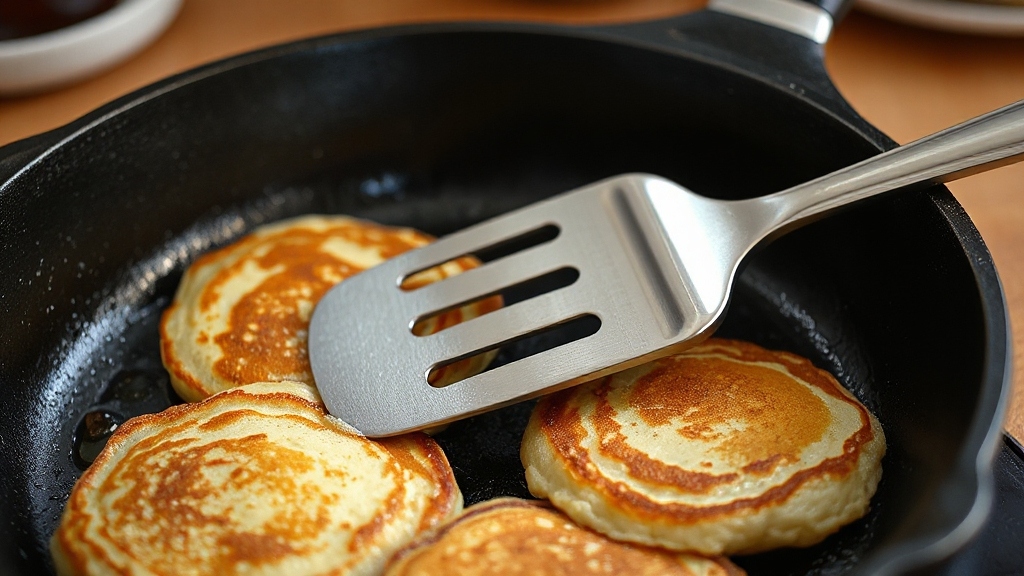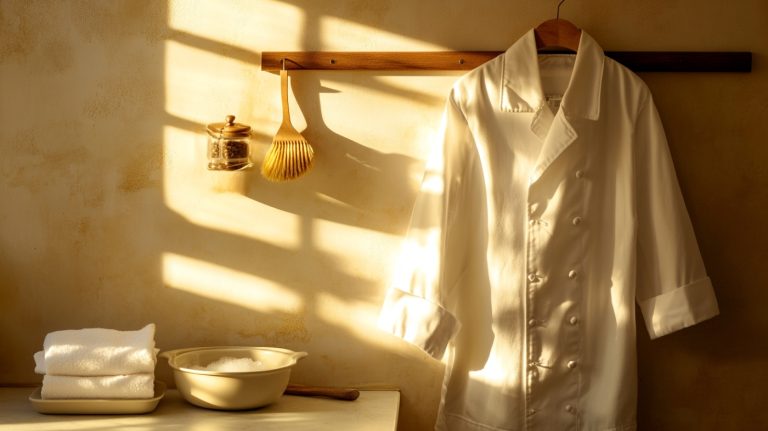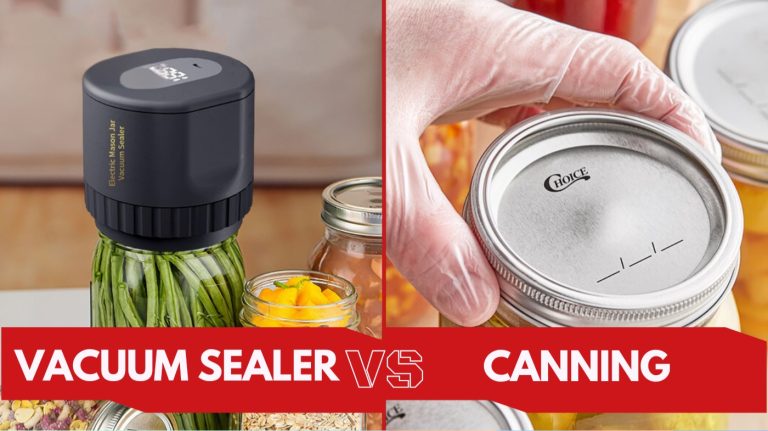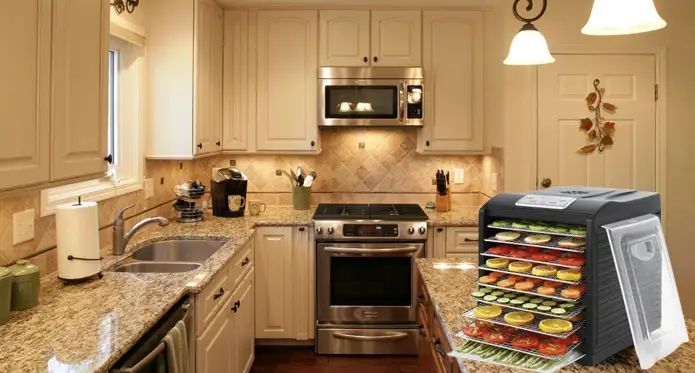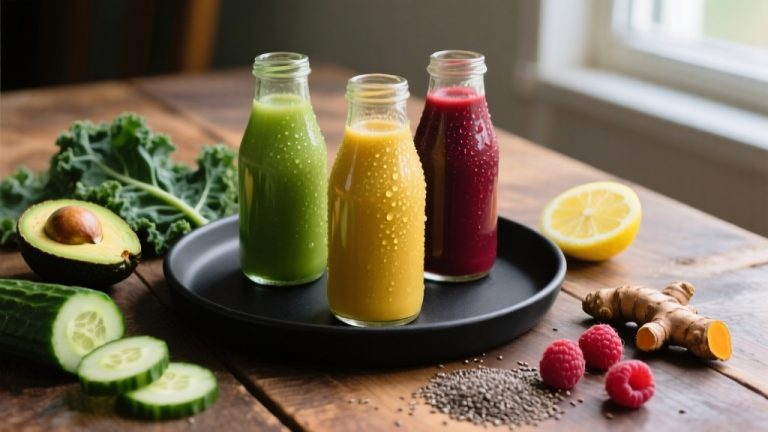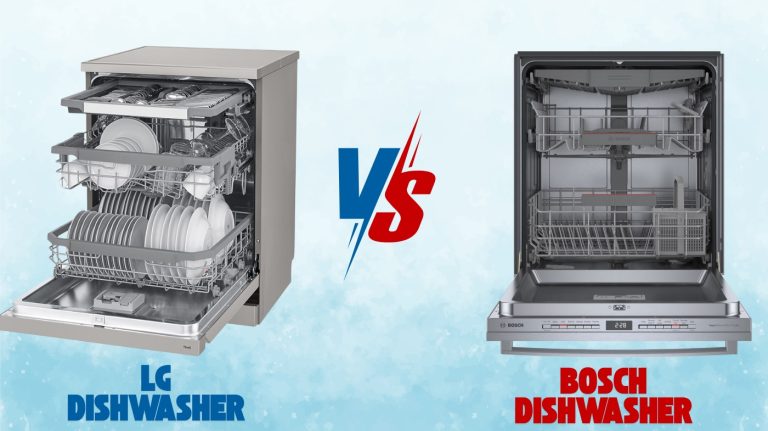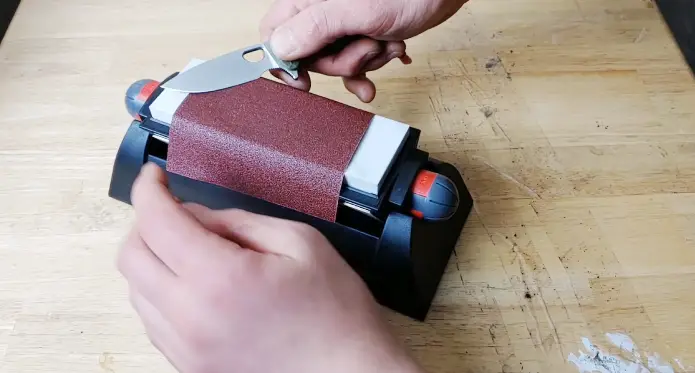Can You Use a Metal Spatula on Cast Iron? Things to Know
You can definitely use a metal spatula on cast iron without damaging its seasoning if you handle it gently.
Metal spatulas, especially those with smooth, rounded edges, can even help maintain your pan’s non-stick surface by smoothing high spots.
Just avoid aggressive scraping or using metal on enameled cast iron, which can chip the coating. Choosing the right spatula and proper care will keep your cast iron performing well.
Let’s explore how to select and use the best tools for your skillet.
Key Takeaways
- Metal spatulas can be safely used on cast iron without damaging the seasoning if contact is gentle and not overly abrasive.
- Rounded or smooth-edged metal spatulas minimize the risk of scratching or chipping the seasoning layer on cast iron.
- Hardened stainless steel spatulas with flat, smooth edges offer durability and effective food maneuvering on cast iron surfaces.
- Light abrasion from metal spatulas can help smooth uneven seasoning, enhancing the non-stick surface over time.
- Avoid aggressive scraping with sharp metal tools to prevent visible damage and maintain cast iron’s seasoning integrity.
Cast Iron Cookware Types
When choosing cast iron cookware, understanding the different types is essential to match your cooking needs.
Seasoned cast iron offers a durable, non-stick surface ideal for high-heat frying and searing once properly maintained.
Seasoned cast iron provides a reliable non-stick surface perfect for intense frying and searing with proper care.
Enameled cast iron features a porcelain coating, making it rust-resistant and perfect for slow cooking and acidic ingredients. It also limits leaching of dietary iron into food, which can be beneficial for those monitoring iron intake.
Unseasoned cast iron requires you to build your own seasoning, giving you control over the non-stick layer.
Specialized options like Dutch ovens excel at braising and slow cooking due to superior heat retention, while cast iron griddles handle flat foods like pancakes and burgers efficiently.
Each type’s construction—heavy-duty iron with either seasoning or enamel coating—ensures durability and versatility for stovetop, oven, grill, or campfire use. Choose based on how you plan to cook and maintain your cookware.
Effects of Metal Spatulas on Cast Iron Seasoning
When you use a metal spatula on cast iron, you need to contemplate its impact on the seasoning’s integrity.
Light contact usually won’t cause scratching, but aggressive scraping can wear down or chip the protective layer.
A rounded edge on the spatula reduces the risk of surface damage, while sharp edges may require sanding to prevent wear on the pan surface damage.
Seasoning Integrity Impact
Although many believe metal spatulas harm cast iron seasoning, using them properly can actually enhance the seasoning’s integrity over time.
When you use a smooth-edged metal spatula gently, it helps smooth out high spots in the seasoning layer, creating a more uniform, polished surface. This controlled action doesn’t strip the seasoning but promotes a consistent finish that improves with each reseasoning cycle.
The cast iron’s durability lets it withstand this “polishing” effect without damage, resulting in better food release and easier cleaning.
To preserve seasoning integrity, avoid aggressive scraping or prying, and choose flat, smooth metal spatulas.
Scratching and Wear
While metal spatulas can cause minor abrasion to cast iron seasoning, they rarely scratch or gouge the pan’s surface under normal use.
Cast iron’s durable alloy resists damage from typical metal utensil contact, and only deliberate, forceful scraping with sharp tools causes visible harm. Over time, light abrasion may even smooth uneven seasoning, enhancing the cooking surface’s slickness.
Using a metal spatula is often recommended because cast iron pans are durable and resistant.
Keep in mind:
- Use sturdy, single-piece metal spatulas to avoid residue and breakage.
- Avoid sharp or pointed metal utensils to minimize gouging risk.
- Regularly inspect and reseason your pan to maintain a resilient, smooth layer.
Ideal Metal Spatula Materials for Cast Iron
Choosing the right metal spatula material is essential for preserving your cast iron cookware’s seasoning and ensuring efficient food handling.
Stainless steel spatulas excel here, offering durability and resistance to high heat without warping. Hardened stainless steel blades are ideal—they’re harder than cast iron, which helps smooth high spots on your pan rather than damaging it.
Look for flat, smooth edges and single-piece designs to prevent scratching and bacterial buildup. Handles made from wood or heat-resistant materials protect your hands from burns while providing ergonomic control.
These spatulas clean easily, resist corrosion, and don’t absorb odors or flavors, ensuring longevity. By selecting a stainless steel spatula with these features, you maintain your cast iron’s seasoning integrity while gaining a reliable tool that handles both delicate and heavy foods effectively.
A metal spatula also withstands high heat, making it a must-have for cast iron cooking. Additionally, paying attention to material durability and maintenance can extend the lifespan of your spatula and keep it performing well over time.
Risks of Using Metal Spatulas on Enameled Cast Iron
If you use metal spatulas on enameled cast iron, you risk damaging the porcelain-like coating that protects your cookware.
This enamel can chip or scratch easily from forceful or improper utensil use, exposing the cast iron beneath to moisture and rust.
Enameled cast iron cookware features a layer of enamel glaze fused to cast iron, making it both durable and visually appealing, but this layer requires careful handling to maintain its integrity.
Damage also compromises the smooth surface, leading to food sticking and more difficult cleaning. To preserve your cookware’s performance and longevity, avoid metal spatulas or handle them with extreme care.
Damaged enamel increases food sticking and cleaning challenges; use metal spatulas cautiously to maintain cookware quality.
Key risks include:
- Chipping and cracking the enamel, which reduces protection and aesthetic appeal
- Increased sticking and tougher cleanup due to surface scratches
- Accelerated wear and potential rust development under damaged areas
Comparing Metal Spatulas With Silicone and Wooden Utensils
When working with cast iron cookware, understanding the differences between metal, silicone, and wooden spatulas can greatly impact your cooking experience and pan maintenance.
Metal spatulas offer rigidity and precision for flipping dense foods but risk scratching unseasoned surfaces if used carelessly. It is important to avoid using metal utensils on enameled cast iron to prevent chipping enamel.
Silicone utensils provide flexibility, withstand high heat, and gently protect the seasoning layer without abrasion.
Wooden spatulas are non-abrasive, don’t conduct heat, and effectively scrape stuck-on bits without damaging the pan.
Silicone is dishwasher-safe, while wooden utensils need hand washing and occasional oiling. Metal spatulas require heat-resistant handles to prevent burns and careful selection to avoid corrosion.
Choosing the right utensil balances durability, surface protection, and ease of use, helping you maintain your cast iron cookware’s longevity and performance.
Features to Look for in Metal Spatulas for Cast Iron
You need a metal spatula that combines durability with high-quality materials like stainless steel to withstand cast iron’s heat and weight.
Below are the key features to look for when choosing the perfect spatula for your skillet—ensuring safe use, better control, and long-lasting performance.
Material and Durability
Choosing the right material and durability features in a metal spatula is essential for efficient and long-lasting use with cast iron cookware.
Stainless steel is your best bet due to its corrosion resistance and high-heat tolerance. Avoid aluminum, as it can warp and react with acidic foods.
Durability is critical; look for spatulas made from hardened steel or thick gauge metal to guarantee strength and rigidity during heavy use.
These materials resist wear, won’t melt or char, and require minimal maintenance. For example, a spatula with a heavy-duty stainless steel construction is specifically designed for cast-iron cookware to ensure maximum durability.
Key material and durability features to prioritize include:
- Heat resistance: Withstands intense temperatures without damage
- Non-reactive surface: Prevents flavor transfer and contamination
- Robust construction: Assures longevity and consistent performance
Edge Design and Flexibility
A metal spatula’s edge design and flexibility play crucial roles in preserving your cast iron’s seasoning while ensuring effective food handling.
Look for spatulas with sharp, chiseled edges that slide effortlessly under delicate foods without damaging them. Tapered or custom-fit edges help you reach all skillet areas, providing precise control in tight spots.
Balanced flexibility is essential: it lets you maneuver beneath fragile items without breaking them yet remains firm enough to support heavier foods.
The spatula should resist heat and retain shape under high cooking temperatures, preventing damage to itself or your cast iron.
Minor scratches from metal tools do not pose long-term concerns for seasoning and are generally tolerated by a well-maintained surface seasoning resilience.
Smooth, non-scratching edges protect the skillet’s seasoning, while the right flexibility enables efficient flipping and removal of food.
Handle Construction and Grip
While the blade’s design guarantees smooth food handling, the handle’s construction and grip determine your control and comfort when using a metal spatula on cast iron.
A well-crafted handle balances heat resistance and ergonomic design, ensuring you maintain a secure, cool grip even during extended cooking sessions.
Look for handles made from heat-durable materials like hardwood or insulated metal that prevent heat transfer.
Ergonomic shaping reduces hand fatigue, while textured or contoured grips improve control and prevent slipping.
Key features to prioritize include:
- Thermal insulation to keep the handle cool and safe
- Ergonomic, contoured design for comfortable handling
- Durable, corrosion-resistant materials for long-lasting use
Additionally, choosing a spatula with a single-piece hardwood handle construction can enhance longevity and avoid loosening or damage from heat exposure.
Maintaining Cast Iron When Using Metal Spatulas
Because cast iron is highly durable, you can confidently use metal spatulas without fearing immediate damage; however, maintaining your pan’s seasoning requires careful handling.
Avoid chopping motions and excessive force to prevent chipping or scratching. Regularly re-season your pan to rebuild its protective layer and store it in a dry place to prevent rust.
Use rounded-edge metal spatulas and smooth motions for minimal abrasion. Remember that just like using the right tool for knife care, choosing the right technique helps preserve your cast iron’s surface by realigning the edge rather than damaging it. Here’s a quick guide:
| Action | Effect on Seasoning | Recommendation |
|---|---|---|
| Chopping food | Can chip or scratch | Avoid in pan |
| Regular seasoning | Builds durable, thick layer | Season monthly or as needed |
| Proper storage | Prevents rust and damage | Dry thoroughly, oil lightly |
Cleaning Tips for Cast Iron After Using Metal Utensils
Even though metal utensils are safe for cast iron, you need to clean your pan carefully afterward to preserve its seasoning and prevent rust.
Start by rinsing the skillet with hot water to remove food residue, avoiding excessive soap to protect the seasoning layer. If stuck-on food remains, use a nylon brush or a pan scraper gently.
Using cast iron skillets daily helps keep them fresh and prevents the skillet from becoming rancid. It is also important to dry thoroughly to prevent moisture that can lead to rust.
Always dry your cast iron thoroughly right after washing to halt rust formation.
Follow these key cleaning tips:
- Use hot water and a non-abrasive tool like a nylon brush or pan scraper.
- Avoid soaking or harsh metal scrubbers unless removing rust.
- After drying, apply a thin layer of oil to maintain seasoning and store in a dry place.
Practical Advice for Choosing and Using Metal Spatulas
Maintaining your cast iron’s seasoning means choosing the right tools, especially when it comes to metal spatulas.
Opt for hardened stainless steel spatulas with thin, flexible blades and beveled edges to lift food easily without scraping. Verify the spatula is one solid piece—avoid riveted handles that can loosen or break. Handles made of hardwood or metal provide durability and heat resistance.
Choose hardened stainless steel spatulas with thin, flexible blades and solid, durable hardwood or metal handles for lasting performance.
Use spatulas designed to withstand high temperatures without warping or melting. When using your spatula, apply gentle pressure to protect the seasoning, especially on older pans. Exploring various options can help you find the spatula best suited to your cooking style and pan size.
Avoid metal spatulas on enameled cast iron to prevent metallic marks. Read reviews and select reputable brands like MANNKITCHEN or OXO for reliable performance.
Finally, choose spatulas that fit comfortably in your hand to enhance control and precision during cooking.
Frequently Asked Questions
Can Metal Spatulas Damage the Seasoning if Dropped on Cast Iron?
If you drop a metal spatula on your cast iron, it might chip or flake some seasoning in that spot, especially if the seasoning’s new or thin.
But don’t worry, the cast iron itself stays intact. You’ll need to maintain your seasoning regularly to repair any minor damage.
Just be careful with impacts and keep your pan clean and dry to protect the seasoning’s durability over time.
Are Metal Spatulas Safe to Use on Cast Iron Grill Grates?
You can safely use metal spatulas on well-seasoned cast iron grill grates without damaging the seasoning. Just avoid spatulas with sharp edges and don’t scrape aggressively.
If your grates are newly seasoned or delicate, opt for wooden or silicone tools until the seasoning strengthens. Always clean and re-season regularly to maintain the protective layer.
How Do Metal Spatulas Affect Cooking Times on Cast Iron?
Metal spatulas don’t affect cooking times on cast iron pans. You’ll find they let you apply firm pressure to flip or scrape food efficiently, which can speed up prep or cleanup but not actual cooking duration. The pan’s heat retention and distribution stay consistent regardless of utensil type.
Can Using Metal Spatulas Cause Rust on Cast Iron?
Yes, using metal spatulas can cause rust on cast iron if you’re not careful. Scraping too hard or frequently with metal utensils can damage the seasoning layer, exposing bare iron that rusts when exposed to moisture.
To prevent this, apply minimal pressure, avoid aggressive scraping, and maintain your seasoning regularly with oil and heat. For maximum protection, consider using wooden or silicone spatulas instead.
Do Metal Spatulas Transfer Heat Differently Than Wooden Utensils on Cast Iron?
Metal spatulas conduct heat more efficiently than wooden utensils, so you’ll notice their handles getting warmer during cooking on cast iron.
Wooden utensils don’t transfer heat, keeping your hands cooler. When working with cast iron, using a metal spatula means you need to be cautious handling it to avoid burns, especially over high heat. Wooden utensils offer safer heat management but lack the strength metal provides for heavy-duty tasks.
Let Your Cast Iron Shine with Proper Technique
When you wield a metal spatula on your cast iron, think of it as a dance—done right, it won’t step on toes. You can confidently use metal tools on traditional cast iron, but tread lightly with enameled surfaces to avoid scratches.
Choose spatulas with smooth edges and sturdy build, treat your pan like a trusted partner, and maintain its seasoning with care. With the right moves, your cast iron will sing for years to come.

